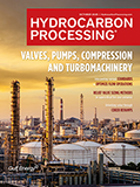Information Systems
Advanced analytics drive IIoT success
Refineries and petrochemical plants face similar challenges in daily operations. Each must mitigate risk, anticipate maintenance, optimize operations and minimize expenses. To achieve these goals, plant personnel rely heavily on data to drive decisions.
OT/IT integration for profit-driven operation
Operational technology/information technology integration is required for sharing information among all levels of manufacturing organizations to achieve profit-driven operation, which helps process industry companies implement real-time production performance improvements that are aligned from the management level to the plant floor.
Innovations
Sphera has released a new Interactive piping and instrumentation diagram (P&ID) solution that helps organizations break down silos between their operations, maintenance and engineering departments while simplifying isolation planning.
Business Trends: Managing risk and uncertainty: The importance of optimizing your value chain
No doubt exists that COVID-19 is disrupting the oil and gas industry. Oil prices are falling, demand is down, supply is up, and storage capacity is limited. In these difficult times, the industry must swiftly act to keep business viable to come back strong when conditions improve.
Executive Viewpoint: How to develop a successful asset management strategy during the coronavirus downturn
The coronavirus (COVID-19) has disrupted all sectors of the oil and gas industry, including asset management.
Base layer enhancement study for crude oil distillation process
Base layer control is one of the most important stages of a process control system hierarchy for refinery applications.
Piping and instrument diagrams (P&IDs): Part 2—Causes and management of change
It is difficult to categorize or group the many reasons for routine or late changes to a P&ID. Some causes are listed here.
Flow modeling as a tool for WHRU performance optimization
Greenhouse gas (GHG) emissions have become a growing concern for many industrialized countries over the past few years.
Use CFD modeling to improve burner design and operation
Process heaters are essential pieces of equipment in the refining and petrochemical industry that are used to heat hydrocarbons to a desired temperature.
Rapid crude yield: Merging DHAFE with HTSD
Rapid crude yield (RCY) combines a detailed hydrocarbon analysis of the front end (DHAFE) with high-temperature simulated distillation (HTSD), creating a true boiling point (TBP) curve for a crude oil sample.

- KazMunayGas and Uzbekneftegaz partner to build 50,000-tpy linear alkylbenzene plant 11/17
- Verso Energy awards FEED contract to Rely for the DEZiR eSAF project 11/17
- Iran confirms seizure of tanker with petrochemical cargo headed for Singapore 11/17
- Asian gasoline margin spikes to highest since August 2023 11/14
- Lukoil-Moldova grants free use of airport fuel terminal to government amid U.S. sanctions 11/14
- Croatia rejects Russian vacuum gasoil cargo after U.S. sanctions 11/14




